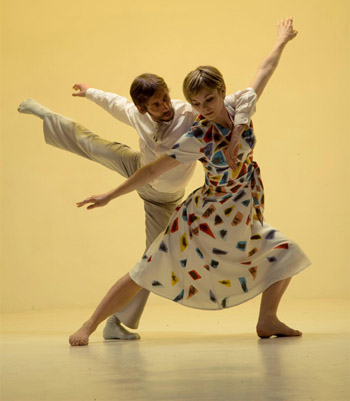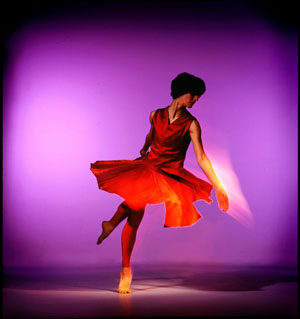June 1, 2011
Richard Alston Dance Company at the Oxford Playhouse, 1st - 2nd June 2011
The mix of classical and modern was particularly visible in ‘Light Flooding into Darkened Rooms’, a pas-de-deux danced in semi darkness with precise beams of light shining as though from high up windows. Inspired by the paintings of Vermeer and the lute music of Denis Gaultier, it really went for the atmospheric side of things. The two dancers entered slowly as if meeting illicitly in a deserted library, and the dance that followed - though studied and full of held poses like a series of paintings morphing into each other – seemed to continue the narrative. Intimate moments of stillness punctuated the flowing movement, where the performers simply stood close to each other, or lay on the stage floor together. It was the combination of precise dance moves and the personal drama that really held my attention.
The second half of this dance I found needed more concentration, when the guitarist swapped to a banjo and the baroque sounding cadences gave way to spiky discordance. In terms of the narrative, it felt like we had reached the stressful part of the relationship. There are clear challenges involved in matching dance to this kind of music - when it is very difficult as an audience member to pick out a time signature or even distinguish phrases on a first hearing – and it seemed less like the dance moves were coupled with the music, more like they were inspired by it from a distance.
While remaining within one style, the choreography was far from homogenous, and private poise gave way to exuberant gymnastics in ‘Roughcut’, by far the most energetic piece of the evening. Similarly divided into two halves - first with a clarinet and backing tape, then with electric guitar and backing tape - the entire cast of ten dancers took part in this rollicking finale. Spotlight was given to each couple in between really euphoric moments where they all danced together to the swelling and diminishing strains of clarinet or guitar.
Live music onstage throughout added a lot to the performance. In intimate moments having one musician in sight rather than projected music in the background increased the privacy of the setting, and in more energetic moments there was something immediate about having at least one strand of the harmony coming from the musician on the stage in front of you, and not all from the backing tape.
The performers in the Richard Alston Dance Company made the most fantastic moves look easy, and their technical excellence was evident in their ability to dance in perfect unison and move seamlessly from one extraordinary position to another. Added to this, I would go again just for the drama. It is not the easiest music and choreography to relate to – you might not be tapping your foot to every beat or humming themes on the way home – but it is wonderful drama from powerful dancers. I’d recommend catching them while they’re in town.





